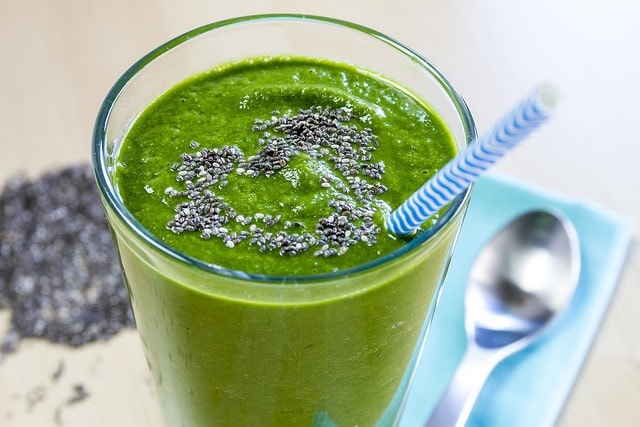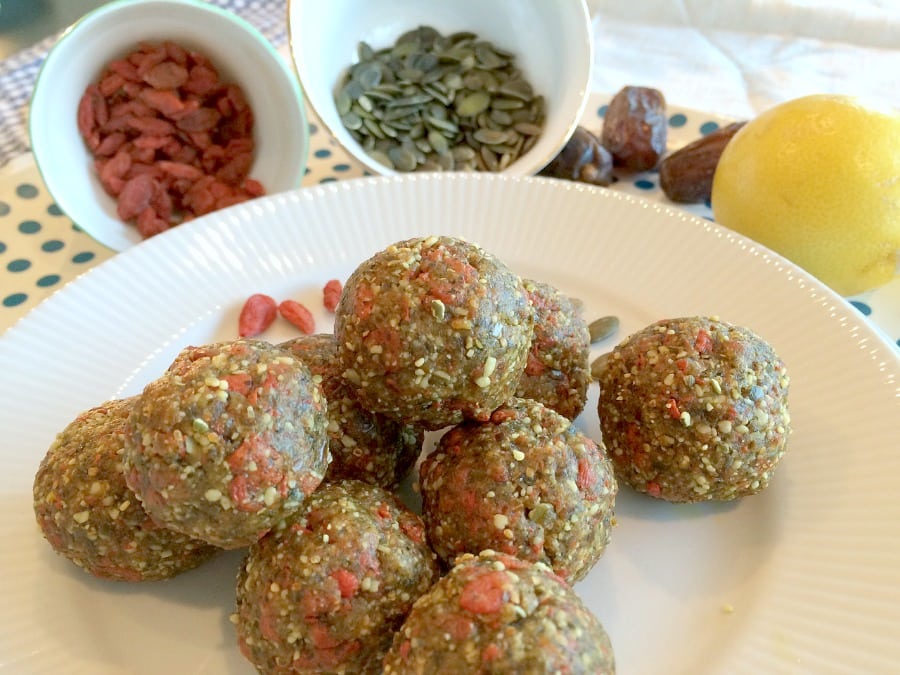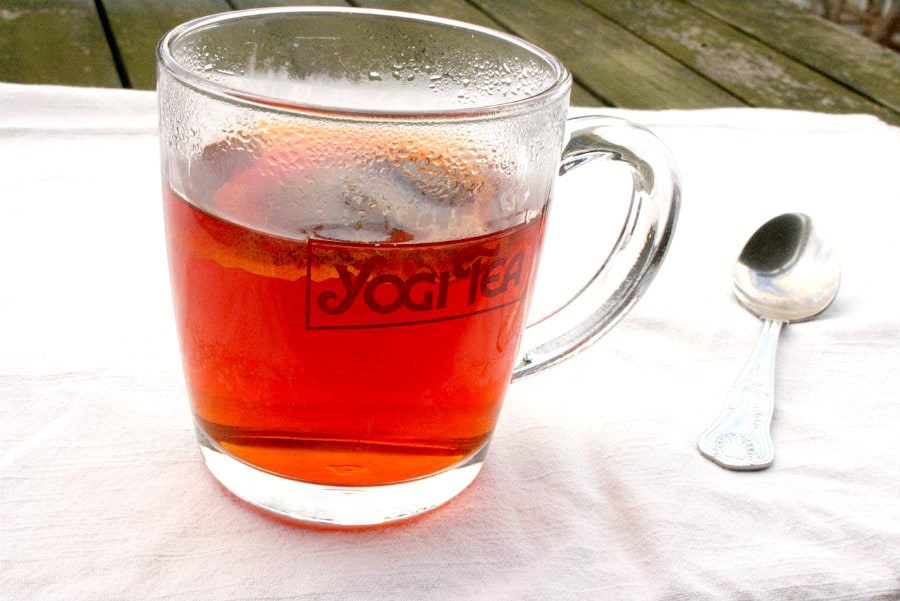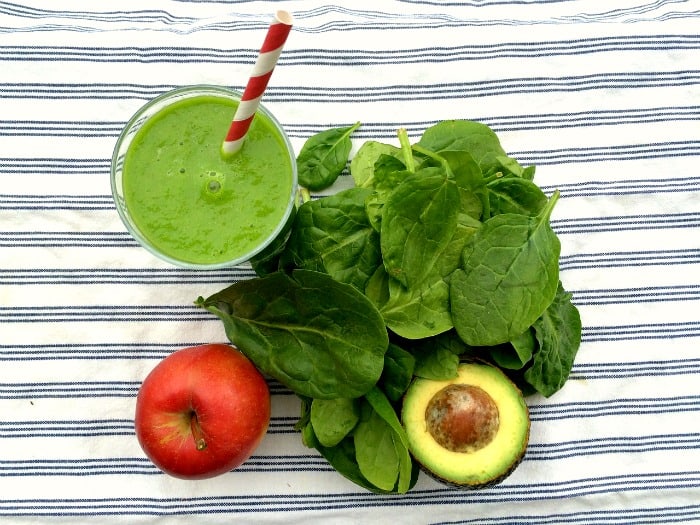Reduce cholesterol with daily green smoothie
I am a big proponent of the “attraction” diet, instead of the “avoidance” diet. What do I mean? It’s a question of focus. Instead of a focus on the avoidance of a substance, we focus on exactly what we need to put into our body everyday.
We’ve been told for years to avoid saturated fats and red meats etc. to reduce cholesterol. While this is good advice in general, this kind of “avoidance” eating can in theory be done while still eating very unhealthily.
What to do instead? Make sure you get your fruit and veg everyday. Like clockwork. Not in a “that would be a nice thing to do”, but in a “No exceptions – I eat my veg religiously” kind of way. And, the more raw fruits and veg you can eat, the better. And of course, you can ensure you are eating the “best” veg – the ones that have been linked with heart health, cancer reduction, etc.
The cholesterol lowering benefits of vegetables
The reasons for eating veg, as I’m sure you’re aware, are numerous. I’ve listed one of the most compelling reasons below which relates to heart health, and a significant reduction in cholesterol, which I’ve personally experienced through eating green smoothies daily for the past 6 months. As a result I’ve seen a second drop in total cholesterol (from the smoothies as well as additional foods that I will talk about in future posts) of almost 100 points (from 267 to 170 mg/dl or 6.9 to 4.4 mmol/L). The first drop (from 352 to 267) came about primarily from eating oatmeal everyday which I started when I was at an all-time cholesterol high of 352 md/dl (9.1mmol/L).
But it’s hard to fit in all that fruit and veg, right? I know I had trouble doing this, for years! I wanted to eat my veg, but I couldn’t find a way to do it very easily – especially getting enough raw veg. It was terribly difficult until this spring when I found the green smoothie – an ingenious and tasty concoction of goodness, that is dead easy to slip into your routine, without almost hardly noticing!
If you want to skip the science below, and get the “to-do” step, then here’s the recipe that will change your life
RECIPE: Reduce cholesterol with daily green smoothie
- 2 cups spinach or kale (I alternate b/t these 2 often – if using Kale, strip the leaf off the stem before blending. If spinach then chuck whole leaves into blender. Put leaves at the bottom of the other stuff, so it blends well.)
- 1 apple (I use this handy apple divider gadget to quickly decore my apples in 2 seconds)
- 1/2 avocado (just cut in half, and spoon half into blender)
- 1-2 cups coconut water – adjust to get the consistency you like
- Handful of ice
Optional
- After you’ve gotten into the habit, you can also add superfoods and other healthy bits to make it even better for you. Things like chia seeds (2 Tbsp), spirulina powder (1 tsp), maca powder etc. are nice nutritional boosts
- Chuck the ingredients into your blender/liquidiser keeping the same order
- Blend for about 1 min until smooth (even a crappy blender will do – the secret is to let it blend for at least 30 secs to 1 min to avoid lumps).
- Drink. Repeat each and every AM.
Turn your green smoothie into a daily habit
OK, so why are fruit and veg so important? Read on, for a partial list of reasons. There are so many, that in reality, I’m not even going to scratch the surface. I focus on one key heart-healthy reason below.
Fruit and veg protect your body from circulating fat due to their antioxidant content (ORAC score)
Nutritionists and researchers now believe it’s our intake of fruit and veg with their high level of antioxidants that protect circulating fats from oxidation in our bodies. They suggest that this intake of fruit and veg is more linked to heart-health than reducing high saturated fat intake. Wow, what? Read that again!
All of that avoidance of saturated fat we were doing, was not the critical thing to focus on. We were missing the higher priority action, which is to heavily increase our fruit and veg intake! I’m not suggesting you go out and chomp on great quantities of bacon, but I am living proof that you can still eat bacon and other red meats in moderation if you change your focus. When you move from an avoidance of meat to an abundance of high quality veg and fruits, your cholesterol will drop, but more importantly your inflammation markers will improve. I have written in other posts about the fibre in fruit / veg and how this affects cholesterol. Fruits and veg are highly protective and health-restoring in many ways.
I have recently been reading the book Cut your Cholesterol by Dr Sarah Brewer (which at £3.69 is a steal and highly recommended), that shares research from Harvard University involving 126,000 people. They showed that those with the highest intake of fruit/veg were 20% less likely to have a heart attack over the next decade, and that
each additional serving of fruit and veg reduced the risk of coronary heart disease by 4%. That extra apple actually does something tangible for you!
The importance of the ORAC Score
You can assess the antioxidant potential in fruit and veg via something called an ORAC score (Oxygen Radical Absorbance Capacity). Scientists estimate that the average person gets about 5,700 ORAC units per day, however the optimal level if you have raised cholesterol is 20,000 units per day. (The number of people with raised cholesterol is more than 35% of all American adults or roughly 71 million people.)
So essentially, while many of us have health challenges, we are getting only slightly more than 1/4 of the fruit and veg that we need to remain healthy. Shocking! I think this is a highly disturbing fact that highlights one key reason for many diseases including heart disease, but this is a topic for another post.
So the ORAC score on the green smoothie above, would be:
Foods per 100g (3.5oz) ORAC scores are:
- Apple: 2828
- Spinach: 2640
- Avocado: 1933
So for our recipe above,
- Apple: A medium-size apple weighs 154 gram or 5.5 ounces. ORAC: 4444
- Spinach: 5 oz of spinach in 2 cups. ORAC: 3771
- Avocado: 1/2 medium avocado is about 75g. ORAC: 1450
- TOTAL ORAC FROM MORNING SMOOTHIE: 9665
So what does that mean? Well, it’s suggested that you need at least 7000 ORAC units daily for health, and 20,000 for optimum health if you are looking to combat any health disorders (like raised cholesterol for example). Only one smoothie a day puts you half-way towards your daily “optimal health” goal, and immediately makes you better off than the majority of the population who gets only 5,700 / day on average. Drink your ORAC units, and get it done first thing, so it’s a non-negotiable part of your day.
I’m just keeping it really basic, which I strongly believe is essential when you’re trying to make dietary changes. Once you have nailed the above routine for 21 days, you can then experiment by adding some other ingredients which also have high ORAC scores – you can see the full list of ORAC scores on this excellent website. Beetroot for example, is another great high-ORAC item to add to the above smoothie.
But for now, keep it simple and just begin!
- Buy the ingredients on one day.
- Wash them / cut them up.
- Then try a smoothie out to see how you like it.
- At the beginning, you can adjust the amounts if you want a different taste.
- Try different, sweeter fruit like papayas or mango in addition to your apple, if you need it a little sweeter to start.
- But just begin. Your arteries will thank you.










Can’t wait to try this smoothie recipe! Looks delicious and healthy.
Thankfulness to my father who stated to me regarding this web site, this
webpage is in fact remarkable.
Reblogged this on Heart Matters and commented:
I almost feel like I should be promoting this blog professionally. Laura knows what she’s talking about AND she really needs this information for herself. Professional nutritionists are great, but when you know you could die from cholesterol, heart disease or heart attack…even diabetes…you MUST LEARN how to change your life. Take control of your own life wellness.
Thanks so much Miller! Taking control of our health is the number one thing I learned on this journey. We’re our own best advocates!
Love this!!! Gorgeous pictures too and great post. I just learned I have slightly high cholesterol too, partly probably also genetically (my mum is also petite and also has high cholesterol), but I eat super healthy. This is great to know!!
Thanks! And turns out that slightly high cholesterol is very likely totally ok (or preferable) according to the latest research – but if there’s one thing I can say it’s that if you have a genetic link then your tolerance for weight fluctuation will be minimal (which in my case is actually a good motivator to stay fit!). Your approach will serve you well! Lots of veg, superfoods, and no real sugar or wheat will work wonders!
Thank you Laura for the great and very helpful comment!! I will be back for more info, love what I can find on your blog! 😉
Green smoothies are the best. I have diabetes type 2 and to be honest its a pain to live with this disorder. I always try to reduce my cholesterol but with so many tensions is hart. Thank God for smoothies.
The nice thing about Diabetes Type 2, is that it’s almost entirely reversible. Diet has a massive impact on the disease. Even better than smoothies for Type 2 Diabets, is if you cut sugar and high-carb, insulin driving foods (sugar, white flour, and foods high on the glycemic index). This is how you can reverse the disease. The great news is that you don’t have to live with it forever, you can be rid of it, once you change your lifestyle.
Let`s face it, are many that are browsing this websites for different reasons but from time to time we need to take our time and really thank the person who spent time and money to grow this website. Well in simple words: Thank you for everything, you got a lifetime member on your website!
This is just what I needed! Thank you
Love your blog x
Thanks so much – best of luck with getting the green smoothie habit going!
Do you mind if I quote a few of your posts as long as I provide credit and sources back
to your weblog? My website is in the very same niche as yours and my users would really
benefit from some of the information you present here.
Please let me know if this okay with you. Many thanks!
Yes of course – feel free to share this information and link back here. Thanks!
Touche. Solid arguments. Keep up the amazing effort.
Good recepes love your Blogger and aesy green smoothie
I am not sure where you’re getting your info,
but great topic. I needs to spend some time learning more or understanding more.
Thanks for excellent information I was looking for this info for my mission.
You’ll always choose professionals having an instant delivery.
LOL – My mother is doctor and she was laughing with great joy reading your blog! I agree with both of you:)
Thanks for finally talking about >Reduce cholesterol with daily green smoothie | The Confidence Kitchen <Liked it!
Thanks for sharing your thoughts on piccolo nerone restaurant guadalajara.
Regards
This is the first genuinely helpful website I have found where the author is not trying to,brainwash me to sell me something. It is all great information, simply presented, and in a format that makes it easy to make a start.
Laura,
It’s a miracle I found your blog in the deep ocean of what is said on the WEB today.
I recently found out that I have high cholesterol (total 298 and LDL 239), even though I’m a petite person and very aware to eat on a healthy way.
The information I found here is so much helpful and very clear on the steps that I have to follow to make lower my cholesterol in a natural way.
I did a mistake though: I started taking the prescribed medication that my doctor recommended since I was panicked, and I started also having a strict diet that takes out flour products, sugars and no dairy. I have to redo my cholesterol test after two months. Lets see….I’m very curious to see where my cholesterol levels will be.
Thank you so much for everything that you are sharing with us, and wish you to be healthy & safe!
Hi! Just curious – how did the green smoothie plan workout for you? Did it help in lowering your cholesterol?
Thank you for this!. I am going to start my green smoothies again. Could you give me a good replacement with a high score for the avocado in this recipe?
Hey Beth – wonderful – I hope your green smoothie journey is going well! Since this smoothie is 3 ingredients, avocado is central to this one for the healthy fats and wonderful texture it provides. Small bits of banana work well in many smoothies to provide a similar creaminess, but you don’t want too much banana in smoothies, as it has a relatively high sugar content, and relatively low ORAC score. Only 650 ORAC units for a medium banana (80g). Compare that to the whopping almost 2000 for an avocado, and you see why you don’t want to swap it out in this recipe! But I get that some people don’t like avocado or are allergic. In that case, you can find recipes using almonds for the healthy fat (and cholesterol lowering effects), alongside greens and blueberries, and that is a great smoothie as well!